The data generated from the CT scan can be harnessed to help the treatment plan and guide the surgical procedure, thereby increasing the accuracy and decreasing the invasiveness of the treatment.
Patient-specific Stereo Lithographic Anatomic (SLA) models are generated from acrylic using information derived from the CT via a Computer Assisted Design/Computer Automated (CADCAM) technology known as Rapid Prototyping. RP is utilized in many products used in everyday life. For the oral and maxillofacial reconstructive surgeon, SLA models of the jaws and facial bones are used to analyze and plan complex reconstruction and replacement of bone and joint.
Frequently Asked Questions
How Accurate Is Computer-Guided Surgery Technology?
Computer-guided surgery has been proven more accurate and reliable than free-hand surgery, as it allows for exactness and customized precision during each procedure, especially when inserting an implant. Implant placement guided by computer technology enables surgeons to achieve perfect placement through a quicker, more accurate process than traditional surgery alone.
According to the International Team for Implantology, studies show that implants placed while using computer-guided surgery have a survival rate of 97.3 percent in comparison to implants placed through traditional dental surgery, which have a survival rate of 96.4 percent, proving the computer-guided surgery creates not only a smoother surgical process but also improved results.
Why Does Dr. Sultan Choose to Use Computer-Guided Technology?
As a board-certified oral surgeon in Fort Lauderdale, FL, Dr. Leslie Sultan draws from his experience in oral surgery and background in computer design to execute efficient, accurate, and safe treatments. Because of Dr. Sultan’s expertise in both of these fields, he is able to combine human knowledge and experience with the precision of computer-guided technology, allowing him to provide patients with personalized, high-quality oral care. This technology allows Dr. Sultan to make smaller incisions, achieve improved and accurate precision, and complete procedures quicker than before with excellent results.
What Are The Benefits of Using Computer-Guided Surgery?
Computer-guided surgery offers many benefits to both oral surgeons and patients. For surgeons, computer-guided surgery allows for the following:
- Increased accuracy and precision
- Faster surgical time
- Smaller incisions
Patients can benefit from computer-guided surgery as its precision and short procedure times lead to a more comfortable experience overall. Smaller incisions lead to less invasive surgical techniques, making recovery easier and less painful. Computer-guided surgery can also help patients digitally visualize what the results of their procedure will look like, prompting realistic expectations and allowing patients to enjoy their oral health and improved smiles.
If you are interested in learning more about computer-guided surgery and whether you are a candidate for treatment, give Dr. Sultan a call today at 954.771.8772 to schedule your consultation!
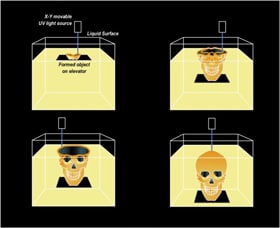
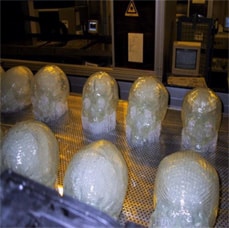
SLA models are valuable in the planning for correction of facial asymmetries and tumor resection:
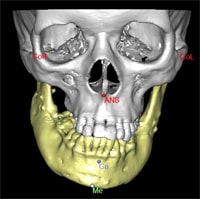
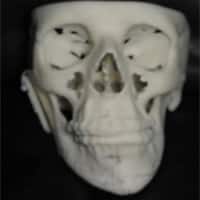
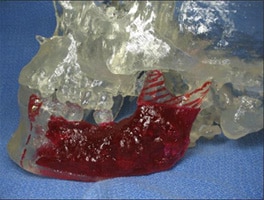
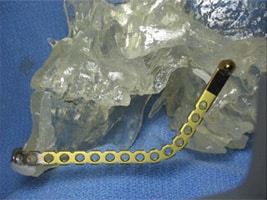
Patients requiring TMJ replacement have Patient Specific Prosthesis designed and manufactured from the same process:
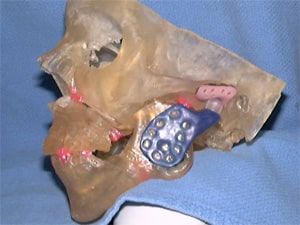
Surgery includes total joint replacement
and upper/lower jaw repositioning.
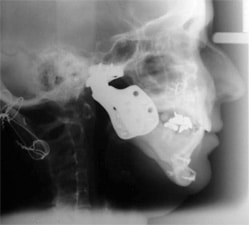
Computer Guided Surgery technology can also be used to plan for Orthognathic (Jaw Repositioning) surgery:
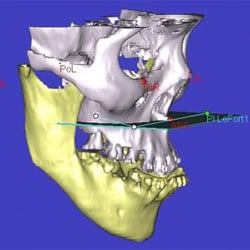
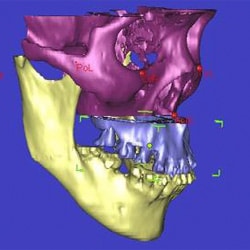
Computer Guided Surgery and Dental Implants
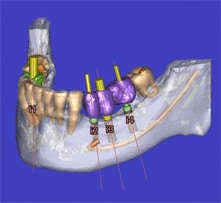
placement of 3 implants.
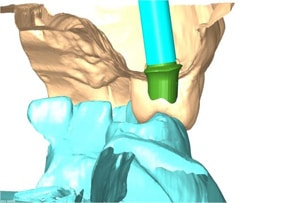
Data from a CT scan, whether it be medical or cone beam, can be formatted by special software to accurately plan and implement dental implant placement.
Our practice supports the use of Simplant® software for treatment planning.
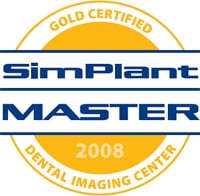
As a Simplant Master Site, we have the ability to convert any CT data to usable treatment planning data.
Once the CT data is acquired, it is sent to a master site, where a technician reformats the data for the implant team (surgeon, restorative dentist) to view.
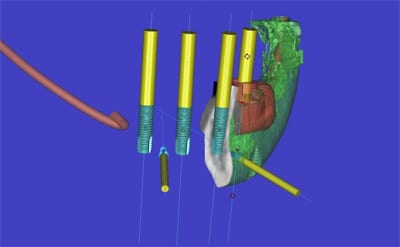
Computer Designed Surgical Guide
Once the implants are placed virtually in the software, the data is then uploaded to the rapid prototyping facility where a patient specific anatomic surgical guide is fabricated.
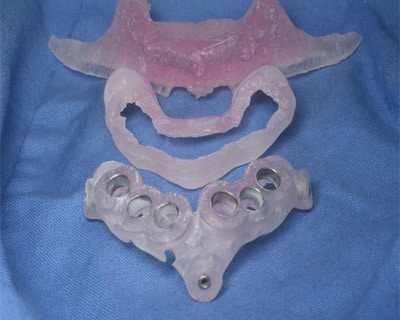
If bone recontouring is required, the software also designs a bone reduction guide to provide guidance, and accurately coordinates with the implant placement guide.
These guides differ from standard surgical templates in that they provide 3 dimensional placement of the implant (location, angulation, and depth control). The guides also allow for implant placement directly through the guide. This allows for minimally invasive surgery.

The technology has been perfected to allow presurgical manufacture of an implant supported bridge that can be placed on the same day as implant placement (teeth in a day). These techniques can be utilized for all patients requiring bone grafting and tooth replacement:
- Single tooth
- Multiple teeth
- Completely edentulous
Placement of a custom surgical guide for "flapless" surgery
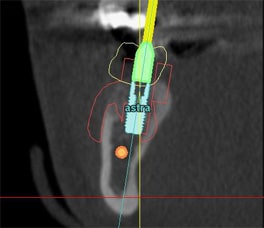
virtual implant placement.
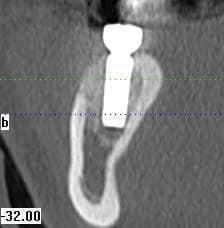
Note sub-millimeter accuracy!
Our practice has experience with placing hundreds of implants using the precision of computer surgical guides.
Along with offering every surgical patient a Cone Beam CT scan, we have the capabilities to convert CT data from ANY scanner to this usable format.
The advantages of the implant placement using the Scan to Plan Process with Computer Guided Surgery are many, including:
- Shortens surgical time
- Improves accuracy
- Minimally invasive
- Reduces complications
Dr. Sultan is at the forefront of this technology and has not only lectured on the subject, but has developed innovative techniques to streamline specific, complex cases.
Please refer to the Scan to Plan Presentation to learn more about how Computer Guided Surgery can facilitate your treatment!
CALL DR. SULTAN FOR COMPUTER GUIDED SURGERY IN FORT LAUDERDALE!
Contact Sultan Center for Oral Facial Surgery today to consult Dr. Leslie Sultan about the benefits of Computed Guided Surgery! Dial 954.771.8772 today or fill out form in our contact page. Our practice can answer any questions you have and provide you with the latest techniques for your procedure.

